KITCHISSIPPI TIMES



















BY CHARLIE SENACK
From the time Aron Slipacoff was 12 years old, he was taught the value of hard work and supporting local businesses. His family owned a grocery store in the ByWard Market, founded by his grandfather who had immigrated from Russia.
The days were long and Slipacoff witnessed his parents working 70 to 80 hours a week to put food on the table. It’s that passion and dedication he hopes will be of benefit in his new role as executive director of the Wellington West Business Improvement Association (BIA).
“Small business is what I’ve surrounded myself with. When I go shopping, I already ask how business has been. My heart is with those people. I really care a lot about the success of it — not just the neighbourhood, but the individuals that make the community,” said Slipacoff. “I’ve had the experience of building brands, marketing and advertising. It’s such a good fit for me to champion a neighbourhood as vibrant as Wellington West.”

The Old Ottawa South resident grew up in Ottawa but moved to Toronto for a brief stint before returning to the capital to work for Manitobah Mukluks. There he served as a manager and director in communications and marketing roles for eight years.
It was a dream job, he said, which ended abruptly when the company was sold just after the pandemic. Unsure what to do after such a
sudden life change, Slipacoff saw the BIA executive director posting on Linkedin and thought it would be a fun challenge.
“First and foremost, I bring the spirit of listening, collaboration and a shared vision. We have about 600 different businesses and that means over 600 business owners who are super passionate, educated, smart and driven people who are used to being their own boss,” said Slipacoff. “They didn’t feel really heard over the last little bit. We can’t agree on everything, but we both want to make a good community for businesses.”
Slipacoff, who has a bachelor in arts and philosophy from Carleton University, takes over from longtime executive director Dennis Van Staalduinen, who departed the role last May. Devon Armstrong held the position in the interim until a permanent replacement was found.
Slipacoff starts the job at a time when businesses are trying to bounce back after the COVID-19 pandemic. Storefronts along Wellington Street West have experienced lower foot traffic due to largely empty federal offices at nearby Tunney’s Pasture.
Rising inflation and cost of goods have also forced a number of merchants on the strip to close, with Wellington West facing high turnover in 2023, the BIA reported.
Won Ton House, which had been in operation since the 1970s, closed in December, and The Yard, Ottawa’s only

indoor skate and bike park, shut down when its lease expired in March.
“It’s a particularly challenging time right now. The Parkdale ramp (to the Queensway) is closed on the highway. Tunney’s Pasture is in the midst of revitalization. It’s harder to get to the neighbourhood. We can’t control that. What we can control is making it active and vibrant,” said Slipacoff. ‘I’m a big believer in promotion and sharing what’s going on. In Ottawa it’s getting better, but it’s tough to find out what’s going on here.”
The Wellington West BIA has recently revamped its events calendar and is
encouraging local businesses to share their events and promotions for inclusion.
The Taste of Wellington, one of the BIA’s largest events of the year, is also set to undergo some changes to better reflect the business community. Slipacoff said it needs to be better spread across the entire catchment and to find ways — perhaps with coupons — to have shoppers keep coming back.
“I have some dreams. I want to activate the street like you would see in Montreal or Toronto,” he said. “You want to be able to stumble down Wellington Street West knowing you will witness something cool.”
Small business is what I’ve surrounded myself with. When I go shopping, I already ask how business has been. — ARON SLIPACOFF














BY CHARLIE SENACK

It’s estimated that about nine per cent of the world's adults identify as part of the LGBTQ2S+ community, according to a 2022 survey. In Canada, it’s suggested that one million people are gay, bisexual, lesbian, or any other sexual orientation besides heterosexual.
That number is growing as closet doors open and people begin to embrace who they are. Yet a polarizing political climate is threatening to derail decades of progress.
It’s not always easy being gay. You grow up questioning who you are, asking why you are ‘different’ than the countless straight couples you see in your daily life, watch on television, and read about in books. You get stared at while holding hands with your partner in public, hear whispers in the shadows, and sadly, sometimes face homophobic remarks. There is a small yet vocal group of people who say you’re going to hell for loving who you do, and others think gays and trans have a ‘homosexual agenda.’

But the truth is all LGBTQ2S+ people want to do is be themselves and to spread love over hate. From Aug. 17 until sundown on Aug. 25, Ottawa will be covered in rainbows, sparkles and glitter for the annual Capital Pride festivities. It’s a time full of colour, dance parties, music and laughter.
In 1986, Ottawa hosted its first organized pride event at Strathcona Park. About 50 people gathered with colourful balloons depicting gay and lesbian symbols on them for a picnic. Today, the longstanding tradition continues with a picnic at Hintonburg Park marking the beginning of the city’s gay parade.
This issue of KT looks at the decades of fighting that went into the rights that Ottawa LGBTQ2S+ members now have. It’s hard to imagine, but people who are still alive today were arrested for being gay. While progress needs to be celebrated, it must never be taken for granted. The Pride movement continues, especially for our trans brothers and sisters who are still fighting for the acceptance they deserve.




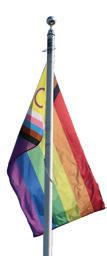






Great River Media Inc PO Box 91585
Ottawa ON K1W 1K0
The Kitchissippi Times is an award-winning newspaper that has serviced Westboro, Wellington West, and surrounding communities for the last 20 years. The word Kitchissippi, meaning “great river” in Algonquin, is the former Indigenous name for the Ottawa River.
STORY IDEA? editor@kitchissippi.com twitter.com/kitchissippi
EDITOR
Charlie Senack charlie@kitchissippi.com twitter.com/charlie_senack
CONTRIBUTORS
Hannah Wanamaker, Dave Allston, Olivia Grandy, Simon Hopkins, Bradley Turcotte, Ellen Bond, Christopher Smith, and Mike Carroccetto.
PROOFREADERS
Susan Rothery and Kate Chappell
ADVERTISING SALES
Eric Dupuis 613-696-9485 eric@kitchissippi.com
CREATIVE DIRECTOR
Tanya Connolly-Holmes creative@greatriver.ca
GRAPHIC DESIGNERS
Celine Paquette celine@greatriver.ca
Deborah Ekuma deborah@obj.ca
FINANCE
Cheryl Schunk, 613-696-9490 cheryl@greatriver.ca
All other enquiries 613-696-9494 info@kitchissippi.com
DISTRIBUTION
A minimum of 15,000 copies are distributed from the Ottawa River to Carling Avenue between the Britannia and Preston Street communities. Most residents in this area will receive the Kitchissippi Times directly to their door. If you would like to become a distribution point, please contact us. Copies are available at Dovercourt Recreation Centre, Hintonburg Community Centre, and dozens of other pickup locations in the area.
DISTRIBUTOR Comet 2000
info@kitchissippi.com
The Kitchissippi Times is published by

FOUNDER PUBLISHER
Mark Sutcliffe Michael Curran

KT’s newsletter keeps readers up-to-date and informed SIGN UP TODAY


Did you know that Champlain Park is home to some very interesting and pretty gardens developed and maintained by the Environment Committee of the CP Community Association? If you pass by the space north of Pontiac, between Cowley and Northwestern, you will find a native miniforest, a pollinator garden, a Carolinian terrace and an ethnobotanical garden. There are also newly installed QR codes that will direct you to fascinating information about each of them. Come visit and take a look at this special place where biodiversity has been restored.
The Mechanicsville Community Association and Ottawa Cougars Soccer Club are currently offering a free drop-in soccer program every Thursday at 6:00 p.m. (ages 4 to 6) and 7:00 p.m. (ages 10 to 13). Register by using the QR code on the KT website version of this article.
The Westboro Community Association (WCA) is holding its Annual General Meeting on Wed, Sept. 25 at the Churchill Seniors Centre. Our community is currently experiencing some of the highest rates of intensification in Ottawa. Are you worried about the loss of tree canopy, wildlife management, lack of fountains in city parks, builders damaging neighbours’ properties, safety and traffic? Do you think we need more active transportation, recreation spaces or community events? Contact us at hellowestboro@yahoo.ca by Sept. 4 so there’s time to review top concerns to discuss at the AGM.
Come join the HCA as a volunteer and help make Hintonburg a better neighbourhood for all! Your role could be super small or quite large—you decide. We’ve got an active Board of Directors as well as 12 active subcommittees but we can always use more helping hands and minds. We are particularly looking for new committee chairs for our environment committee and our transportation committee. Attend our Annual General Meeting on Thurs, Sept. 26 at 7:00 p.m. at the Hintonburg Community Centre.
HAVE YOU EVER WONDERED ABOUT THE HISTORY OF OLDER BUILDINGS IN HINTONBURG?
Have you ever wondered about the history of older buildings in Hintonburg? Who lived in the old homes? What commercial buildings were significant in the early 1900s? How have properties been repurposed over the past 150 years. The Hintonburg Community Association’s History and Heritage Committee has been researching the histories of the neighbourhood’s heritage buildings and posting them with photos on an interactive website. Stay tuned for more information about the launch this fall. Until then, if you have stories and photos of your property, please let us know at hintonburg.history@gmail.com.
McKellar Park Community Association is holding its Annual Fall Festival on Sun, Sept. 22, from 10:30 a.m. to 2:30 p.m. at McKellar Park (539 Wavell Ave.). Join us for a fun-filled day of games, music, face painting and other activities, including visitors from the fire and police departments.

SUMMER CAMPS CONTINUE
There’s still a month left of camps! Registration is ongoing, and spaces are still available for Skateboard, Tennis, Biking, White water rafting, soccer, circus juggling, Flag rugby, Paddlesports, Acro rope jumping, Ultimate, Parkour, theme camps and Youth Zone (Gr. 6-7) and more.
SUMMER & FALL SWIM LESSONS
There are still spaces in all weeks of our Summer Monday to Friday swim lessons. Private lessons are added every week. Fall swim registration is open: grab your top picks of days & times.
FALL SPECIALTY & AQUA FITNESS
Fall Specialty Fitness and Aquafit classes go on sale Tuesday, August 6th at 8:00AM. Programs start in September. And it’s not too late to join Summer Specialty classes.
SESSIONAL RECREATION PROGRAMS
Register now for August recreation workshops. Register starting Aug. 6 for Fall recreation, including dance, sports, pottery, art, music, culinary and more.
FREE WITH FIT PASS
Fit Pass holders enjoy access to the Fitness Centre and 30+ Fit Pass classes per week, including group fitness, spin, aquafitness, online classes, and drop-in swims.
Our indoor pool is the perfect place for recreational swims, and our three wading pools offer a cool break from summer heat. See the schedules online.





BY CHARLIE SENACK
It was a typical summer evening at Hampton Park Plaza. Residents were out shopping for groceries at Food Basics, picking up alcoholic beverages for the weekend at the LCBO, or a quick dinner at Subway. Then suddenly gunfire rang out. At about 6:09 p.m. on July 5, 29-year-old Adam Abdullahi Elmi was shot to death

outside of Fat Bastard Burrito near Carling and Kirkwood Avenues. Shoppers in the area reported hearing two bangs — similar to a knock on the door — then saw a man lying on the ground. They tried to perform CPR but it was too late.
There are various accounts of what happened. Some eyewitnesses reported seeing Abdullahi Elmi in the burrito shop talking on the phone before stepping outside.
• In Kitchissippi ward in 2023, there was one case of attempted murder, 160 incidents of assault, and 1,333 situations where theft of $5,000 and under was reported. There were also 138 incidents of mischief, four cases of arson, 22 robberies, 68 thefts of a motor vehicle, and 198 break and enters.
• Bay ward had one case of attempted murder in 2023, 238 incidents of assault, 26 incidents of theft of $5,000 and under and 156 reported cases of mischief. There were also two cases of arson, 36 robberies, 87 thefts of a motor vehicle and 144 break and enters.
Others said he was sitting in a vehicle beside the restaurant when a gunman approached and shot him in the face. Police have not commented about what they have learned.
Two men, both suspects in the Westboro area shooting, have a Canada-wide warrant out for their arrest. They are Soubere Yusuf Alki and 23-year-old Kennedid Atteyeh. Both are Black men over six feet tall who are suspected to have fled the country.
Atteyeh is wanted for accessory after the fact to murder and an upgraded charge of first degree murder. Alki is wanted for firstdegree murder.
While incidents like this are rare, it’s the second shooting to rock Westboro this year. In mid-March, a 25-year-old woman was shot by police after allegedly trying to flee a traffic stop at Churchill and Avondale Avenues. She was taken to hospital in critical condition. After a four-month investigation, the Special Investigations Unit (SIU) cleared the unidentified male officer of any wrongdoing and said he attempted to protect himself from a "reasonably apprehended attack". The woman involved was turning toward the officer with a loaded Smith & Wesson handgun.
Kitchissippi ward Coun. Jeff Leiper said that while acts of violence are upsetting in any community, they cause more of a panic when they are in areas not known to be problematic.
• Somerset ward reported one homicide and one attempted murder in 2023. There were 421 assaults, 1,824 cases of theft under $5,000, 442 incidents of mischief, 16 arson attempts, 59 robberies, 60 incidents of theft of a motor vehicle, and 343 break and enters.
**Data is reported from the Ottawa Police crime map**
“This was a broad daylight shooting. People worry about people being caught in gunfire. Gunfire is always dangerous and people are unsettled and have been expressing that,” Leiper told KT. “We do live in a very safe city.”
Leiper said he believes one of the ways to address gun violence in the city is by ensuring more support and social services are available to those in need.
“These sorts of incidents and the presence of crime — be it violent or not — is a sign of inequities in our society. The
degree in which we address those, in my view, is the most important way we try to build safer communities,” he said. “Poverty, addiction, and mental health issues create unsafe conditions in the city. There is a lot of work to be done to ensure every resident of Ottawa has a quality and dignity of life that gives them alternatives to crime. We need to strive to build a more equal society.”
Abdullahi Elmi had been near gunfire before. On Sept. 2, 2023, he was celebrating his marriage when shots erupted outside the wedding reception being held at the Infinity Convention Centre in South Ottawa.
The parking lot incident left two people from Toronto dead and six others injured. Police later said the victims were not the intended targets and 50 rounds of ammunition were used. Two weddings were being held that night; the other was not targeted.
Ten months after that Hunt Club area homicide took place, police still don’t have any suspects and are still searching for clues over what happened. To “not jeopardize the integrity of the
This was a broad daylight shooting.
People worry about people being caught in gunfire.
— KITCHISSIPPI COUN.
JEFF LEIPER
investigation,” police will not say if multiple shooters were involved, if shots were fired from a vehicle, or if arrests are expected.
In a statement to KT, a police spokesperson wouldn’t comment on whether they believe the two incidents are related.
“The Ottawa Police Service Homicide Unit continues to actively investigate both the Infinity Centre homicide and the murder of Mr. Elmi,” said police. “All leads and lines of inquiry are being investigated.”
SPONSORED CONTENT
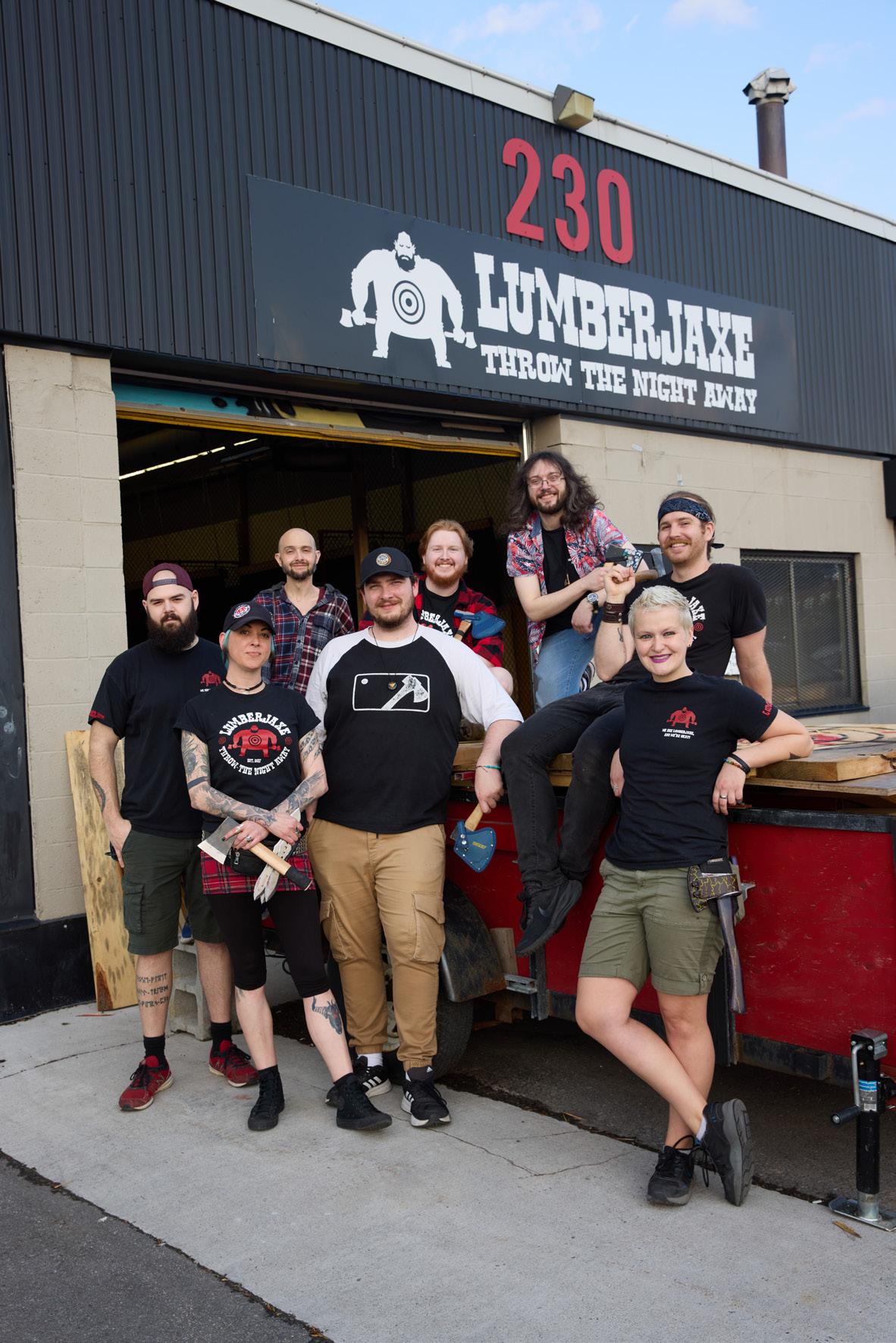
Buying or selling a home is definitely one of the biggest decisions of your life. It’s financial. It’s emotional. It’s important.
Above all, it’s critical that you have complete trust in your REALTOR®.
“This is usually people’s biggest financial investment/asset, but it’s also their biggest emotional one too,” says Jen Stewart, a Realtor at Engel & Volkers in Ottawa. “As Realtors, we have to be able to balance both the numbers and the emotions. It requires a special skill set to do that.”
It’s essential to have strong communication before, during and after the listing period. “You need to be able to count on your Realtor having your back and putting your needs first,’ adds Stewart. “Above all else, we are a people and relationship business. Understanding and knowing the market is essential, but understanding people is just as important.”

want to hear from their Realtor are some of the most basic: “Do the buyers like the home? Do they feel it’s priced fairly? How does it compare to other properties they’ve seen?” Most importantly, are they interested in placing an offer? If so, great! If not, is there anything that the Realtor and/or Seller can change to bring them to the table. Jen works with a strong, experienced team and a global brand at Engel & Volkers Ottawa. She believes it’s important to have strong brand recognition and a good company (and a good team) working for the client. Every situation is different, of course, but having a professional Realtor like Jen Stewart on your side will ensure a smooth process.
Real Estate is a ‘people business’. Like any good relationship, communication is key.
Jen Stewart and her team believe very strongly in inclusivity. It’s important for clients to feel safe and comfortable throughout the process and to never feel like they are being judged for who they are. They have been involved in the LGBTQ2S+ community in Ottawa for many years and have supported many local organizations including the Ten Oaks Project and the YSB shelter for LGBTQ2S+ youth. We celebrate diversity and Pride and always ensure our clients feel safe and comfortable.

When your home is listed you will want feedback. According to Stewart, some of the main things sellers
August through October can be busy real estate months! There is time to list, sell and move in (and/ or out) before the weather turns cold and the holiday season comes. www.dianeandjen.com
Jen Stewart is an experienced realtor helping Westboro (Kitchissippi) area buyers and sellers get results for over two decades. Contact Jen at 613.795.9793 or e-mail home@dianeandjen.com to ask her questions or get your home listed.


BY SIMON HOPKINS
If you’re going to park your car along the Richmond, Wellington, and Somerset Street corridors in the near future, you will need to pull out your wallet.
The change is expected to be implemented in 2025 when parking meters are erected on the main roads between Broadview Ave in Westboro and the Somerset bridge over the O-Train tracks in Hintonburg.
To date, most parking along this stretch of road is free, with a time limit during the day. In most parts, that limit is 90 minutes, with a two-hour limit in some places. Most of the restrictions are only during peak hours of the week.


This year, the city conducted a parking study in Kitchissippi and found that utilization of on-street parking in some Westboro and Wellington West areas has increased by over 10 per cent in the last decade.
With the high demand for parking, the city is looking to create more availability through paid parking. In theory, if parking costs money, people will try to minimize the time spent parked, creating turnover.
But employees who work in the many businesses along this stretch of road can’t change how long they’re parked for. Many businesses don’t have reserved spots for workers, and paid parking could add a burden on the stores or have to be paid by workers themselves.
Kitchissippi ward councillor Jeff Leiper was in support of paid parking and said the benefits will outweigh the negatives.
“It’s going to make driving to work more difficult. We can’t help that,” Leiper told KT. “The city does not provide free parking so that people can work in stores and restaurants.”
Leiper believes encouraging transit

Right: A City of Ottawa chart showing 2023 parking occupancy in various city wards.
use is the solution but acknowledges that commuting across the city is tricky. It’s why he had hoped the implementation would be delayed until light rail construction in the area concludes in 2026 or 2027, but the transportation committee axed that proposal.
“Getting from Orleans or Stitsville to [work in] Westboro can involve multiple transfers between buses. It will become significantly easier once LRT Stage 2 opens in hopefully very late 2026 or maybe 2027.”
Leiper said parking availability is needed to encourage people to shop and eat in Westboro and Wellington West. Paid parking encourages more car turnover, ensuring more spots are open each hour.
That debate is less necessary in Wellington West, Leiper admitted, but leaving that stretch of road free would

be unfair while others become paid. He noted how other major roads like Bank Street, Preston Street, and parts of Somerset already have paid parking.
“There might be a short-term impact on businesses, but we will get through that,” he said.
Spaniel’s Tale co-owner Cole Davidson said he brought up the issue of staff parking during consultations with businesses but was shut down by the city.
Davidson would have liked the opportunity to pay for a parking pass employees could put in the windows of their cars, but it wasn’t a suggestion the city was willing to hear. Regardless, he
isn’t worried the implementation will take too much business away.
“I don't think it will come as a huge surprise to pay for parking,” Davidson told KT.
He supported the city’s decision but was unimpressed with the reception of the ideas brought forward by businesses.
“I do recognize that most of the other sort of traditional Main Street neighbourhoods have paid parking. And it's not fair for there to be outliers in that regard,” Davidson said. “The issue that concerns me the most is the lack of compromise or willingness to see from our side.”















SLEEPWELL PROPERTY
MANAGEMENT is happy to announce the completion of The Talisman, a modern and sophisticated apartment complex that has finished construction ahead of schedule and is now ready for occupancy. Located at 1354 Carling Ave, the building is named after the historic Talisman Motor Inn that once stood as Ottawa’s hottest spot. The Talisman combines classic Ottawa architecture with convenience and amenities for the modern citydweller, providing a serene retreat in the middle of the bustling city.
coworking space to work remotely in a dynamic environment that separates home and business without the hassle of a commute.
After dark, keep the party going and venture out into Ottawa’s bustling nightlife. After sunset, Little Italy lights up with bars, pubs, and entertainment venues, while the annual Tulip Festival showers the area in vibrant blossoms. If that’s not enough, the glittering skyline of Ottawa’s downtown is just a 10-minute drive away.



This trendy new apartment complex is ideally situated across the street from the Westgate Mall, which is currently undergoing an exciting redevelopment to enhance the shopping experience for local residents. Residents can shop ‘til they drop at high-end boutiques in Westboro and for every day essentials with Carlingwood Shopping Centre conveniently nearby. For more natureminded residents, acres of public greenspace are just steps away. Spend the evening strolling Hampton Park, the Experimental Farm, or have some fun in the sun at Britannia Beach. The combination of urban convenience and natural beauty makes The Talisman a perfect fit for any lifestyle.
Once inside The Talisman, residents will discover a perfect balance of energy and tranquility. The state-of-the-art gym caters to fitness enthusiasts, ensuring that you can maintain your wellness routine without leaving the comfort of your home. The panoramic 7th-floor terrace offers an idyllic setting for relaxation or social gatherings, with breathtaking views of the Ottawa skyline.
Both students and business professionals can utilize the in-house
At the end of the day, retreat to The Talisman, your own quiet corner of the city. Peace of mind and effortless convenience are yours with indoor parking, keyless entry, and seamless smart doors that allow instant access control. Whether you’re retiring after a hard day or settling down for some quality family time, The Talisman will provide.
The Talisman is now accepting applications for new residents. If you’re interested in becoming part of this vibrant community, visit talismanapartments. com or email info@talismanapartments. com for more information. Be sure to check out The Talisman’s Instagram page at instagram.com/talismanapartments for photos, videos, and exclusive promotions.
Discover a new standard of urban living at The Talisman, where modern convenience meets timeless charm, and tranquility coexists with the vibrancy of city life. Don’t miss your chance to be a part of this exciting new community!



































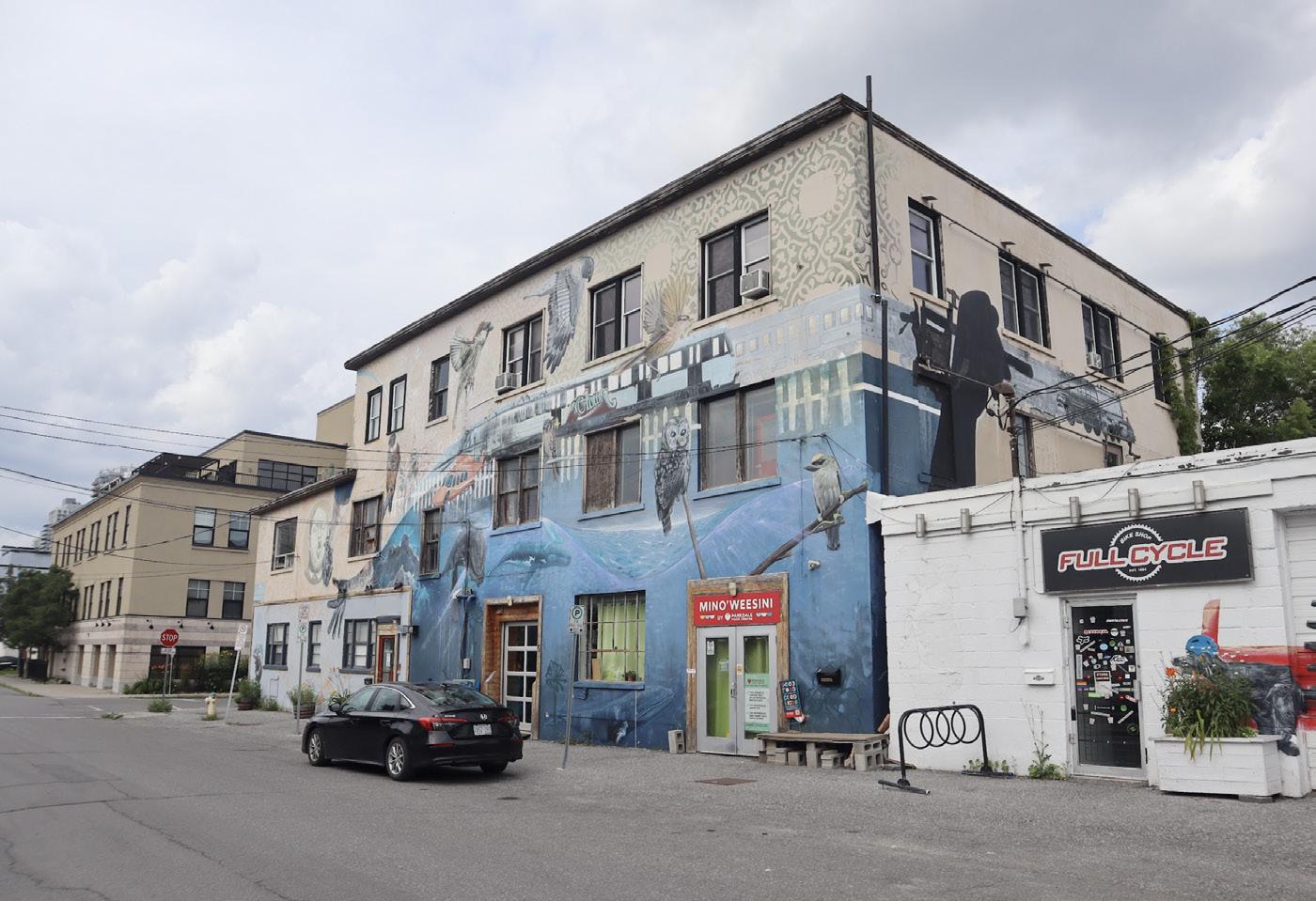
BY DAVE ALLSTON
Along Spencer Street in Hintonburg, running east from Hamilton Avenue towards Parkdale is a small, long, two-storey industrial building. It is somewhat nondescript, blending into a near-full city block of weathered old former factories that have found new life.

The story begins in February 1927, when a Canadian man’s invention made the front page news of almost every newspaper across North America. Industrial chemist George H. Harrison of Moose Jaw, Saskatchewan had perfected a process by which a ton of straw could be burned to extract $250 worth of useful products from the smoke, including paint, germicides and even gas that could power automobiles and illuminate buildings.
The popular American magazine Farm and Fireside broke the news about Harrison’s discovery, which had major potential significance worldwide. The magazine Popular Science gave it particularly detailed coverage.
In fact it was the pursuit of cheap gasoline which drove Harrison’s early experiments.
As a chemist at the Saskatchewan Bridge and Iron Company from 1909 to 1919, Harrison developed a straw gas which propelled his car through the streets of Moose Jaw and Saskatoon in 1917. The idea at the time was impractical though, as it required a huge bag of gas to be placed on the roof of the car.
He instead turned his attention to the by-products of his gas discovery. In early experiments he discovered that he could produce 800 pounds of vegetable carbon and five gallons of tar from a ton of straw. Later he found that the vegetable carbon could be manufactured into an elastic black enamel while valuable aniline dyes could be obtained from the tar in addition to washing compounds and over 100 other by-products.
Following the war, Harrison left Moose Jaw and opened a research plant in St. Paul, Minnesota, where he remained for most of the 1920s working on his invention. He set out to build a unit whereby every farmer could burn straw and produce gas for their own use in a variety of ways. He also wanted to explore how his straw oil could be used as a germicide and disinfectant.


1. The industrial building as seen in 1965. CREDIT: LAC-3342187.
2. Today the building is home to Minno’Wessini, Full Cycle, and other tenants. PHOTO BY CHARLIE SENACK.
3. A National Post newspaper clipping from Nov. 11, 1933 advertising Harrison Paint & Chemical Corporations building permit at the cost of $8,000.
4. A National Post advertisement from Sept. 20, 1941, showing off aviation instruments for freight or engines.
In the summer of 1933, the 61-year old entrepreneur was in Ottawa looking for a location to build a factory for his life’s work, a discovery that he felt would change the world. Harrison moved into a house on Daly Avenue, and in his research discovered a vacant parcel of land in Hintonburg at the corner of Hamilton Avenue and Spencer Street which interested him, kitty corner to the growingly successful Beach Foundry business.
The Ontario Hughes-Owens factory was one of Ottawa’s busiest during the war.”
He made an agreement with the owner of the land, Robert H. Brown, a local small-time mill operator and stable builder to construct a customized building to accommodate Harrison’s straw-conversion enterprise. The $8,000 building permit was taken out that fall, but it was somewhat contentious due to the mysterious and potentially dangerous chemical-based operations.
The building inspection permit department held up the permit, and the Board of Control held a special meeting to review it. With support from the local alderman, H.D. Marshall, the permit was soon approved at the end of October, and in November, a notice of incorporation for the Harrison Paint and Chemical Company Ltd. of Ottawa was listed in the Canada Gazette, with a capital of $50,000.
As mysteriously as he arrived in Ottawa, he suddenly left. Harrison never occupied the building.
Though the Harrison Paint and Chemical Company continued to be listed on the tax roll as the owner, it was a Wellington Street lawyer who was the listed contact in 1934.
The unfortunate Robert H. Brown was stuck with a new expensive factory building in the middle of a depression and a world war looming. He could not find a tenant for the building through the remainder of the 1930s and ended up losing it in 1938 to the original landowners, the Ottawa Land Association.
It was the war that would end up bringing new life to the empty factory. The Ontario Hughes-Owens Company was a local firm that started out in Ottawa in 1912 producing architect and surveyor equipment before branching out to produce scientific instruments, thermometers, and laboratory supplies out of a small factory on Sussex Street.
After WWII began in 1939, they were awarded a series of small five-figure contracts to produce equipment for the war effort, but that would all change in the summer of 1940. Ontario Hughes-Owens began landing massive Canadian war
contracts with the Department of Munitions and Supply for production of aircraft instruments, some worth over a million dollars apiece.
Ontario Hughes-Owens acquired the abandoned Harrison factory, bought the two adjoining vacant lots, and took out a permit for a large addition to the factory. As quickly as they could get rolling, the factory went into production on “the overhauling, repairing and assembling of scientific airplane and marine instruments,” employing up to 150 workers.
That fall, the company was awarded two more large contracts worth over $2 million for more aircraft supplies and the manufacturing of magnetic compasses for Naval and Merchant ships, Aircraft and Tanks for the armed services.
The Ontario Hughes-Owens factory was one of Ottawa’s busiest during the war. They built up virtually the entire block fronting Parkdale, Spencer and Hamilton, and acquired land on the north side of Spencer. By fall 1942 they were producing “Gun Aligning and Deflection instruments, Electric Speed and Distance Indicators, Periscopic-Type Tank Compasses, and many specialized instruments of a highly secret nature.”
Once the war ended, Hughes-Owens did not need as much space. They continued to produce scientific instruments, but began to focus on developing car racks, timers for stoves and washing machines.
In 1951, they sold the Hamilton Avenue property to the Sperry Gyroscope Company for over $1 million. Sperry had a similar mandate of manufacturing and overhauling marine and aircraft instruments. The factory played a key role in production for the Korean war, and eventually Sperry products were in practically all commercial flights in Canada in the 1980s.
The building became a Honeywell (part of the Sperry Aerospace Division) factory in the 1980s, and it was only in the last 25 years or so that the building was converted to small independent businesses as it is today.

















BY OLIVIA GRANDY
On June 1, five cyclists journeyed from Ashton to the Westboro Farmers Market on Byron Avenue. But they weren't riding just for pleasure. Instead, the group raised over $15,000 to support equal education and economic opportunity for women and girls in Tanzania.
Tanzania Education and MicroBusiness Opportunity (TEMBO) is a local volunteer-run Ottawa-based charity that has enabled over 500 girls to attend secondary school in the Longido District of Tanzania. TEMBO also provides microfinance loans, allowing some women to begin small businesses to support their families or receive goats as life-sustaining livestock.
Each cyclist rode 100 kilometres, accumulating 500 kilometres, representing the total number of girls the charity has supported to attend secondary school. With the help of donors, TEMBO surpassed its fundraising goal by almost $3,000. Currently, TEMBO is sponsoring 173 girls.

The Ottawa cycling team consisted of David Chernushenko, Gabriel Brideau, Joel Harden, Joel Downham and Nancy Arbogast. They were joined by virtual participant Hashim Kareemi, who cycled in Vancouver, and David Batchelor and Jack Tannett, who walked the challenge in Perth. Chernushenko, a former city councillor for Capital Ward, highlighted the feeling of cycling toward a collective goal, made even better by a day of "perfect" weather.
"It felt like we were part of a team doing something bigger than just me going out for a fun bike ride," he said.
Chernushenko also praised TEMBO for its targeted, community-based efforts.
"This is an organization that's doing something very specific in a specific place, not just lobbying in a general sense. It's actually targeting specific girls and women with this need and helping them by


providing them with the resources," he said.
Arbogast, a retired teacher who chairs TEMBO's Fundraising Committee, emphasized the organization's mission to bridge the gap between primary and secondary education—a period when girls transition from receiving instruction in Swahili to instruction in English. She said that if language skills are not acquired during this time, girls may get married or become mothers instead.
"We work very closely with our Tanzania partners. We're not telling them what to do. We're asking them what they need and how we can support them," Arbogast said.
Arbogast has taught English in Tanzania three times and plans to return this fall. She has been surprised by the girls' gratitude for resources and eagerness to learn each
time. Arbogast was a part of TEMBO’s most recent trip this past January.
"[In Canada,] when we get to summer break, our students are thrilled to be out of school … In Tanzania, the TEMBOsponsored girls get to come to an English camp … They can't wait to get there," she explained.
On the fundraising side, community advocate Katie Hession also contributed to the momentum of the TEMBO 500 challenge. Hession, a spin instructor at Where I Thrive, ran a charity class to raise money for TEMBO, a cause that became close to her heart in 2008 when she visited Tanzania with her mother.
Hession said she is still in touch with a student named Namelock, whom she sponsored on her trip. Recently, Namelock opened a gym where she also organizes fundraising.




Sandra runs a canning project where she donates her time and all profits to TEMBO. She is partnered with two vendors who help her get her preserves to roadside stands and markets. Although not trademarked, Sandra refers to her project as "canning for a cause."
Melissa Clark, the President of TEMBO's board, credits the success of the TEMBO 500 challenge to the generosity of each rider's friends and colleagues in their donations.
Still, with past experience working for a charity where donations stayed local, Clark said it is relatively difficult to garner
support for TEMBO. She wishes more people understood how far a few Canadian dollars can go abroad.
"A small amount of money changes lives, not only the single life – like the girl who went to school or the woman we gave the loan to – but it changes so many lives," Clark said. "We've been there for twenty years, and now the community values education."
Clark said that $150 — about the cost of a fancy dinner — is about enough to help a woman start a small business that can support her and her family.
TEMBO's next fundraising events include an online auction scheduled from Oct. 18 to 26 and a friendship tea in April 2025. You can learn more about TEMBO at projecttembo.org.

















Public Market Presents:
SATURDAY AUGUST 17 • 5PM-9PM
Parkdale Market • 366 Parkdale Ave.
Shop from local 2SLGBTQIA + artists, makers, small businesses, restaurants, bakeries and more!



DJ del Pilar 5PM - 9PM



SPECIAL GUESTS
OK Naledi 6PM - 6:30PM Small Fish 7:30PM - 8PM












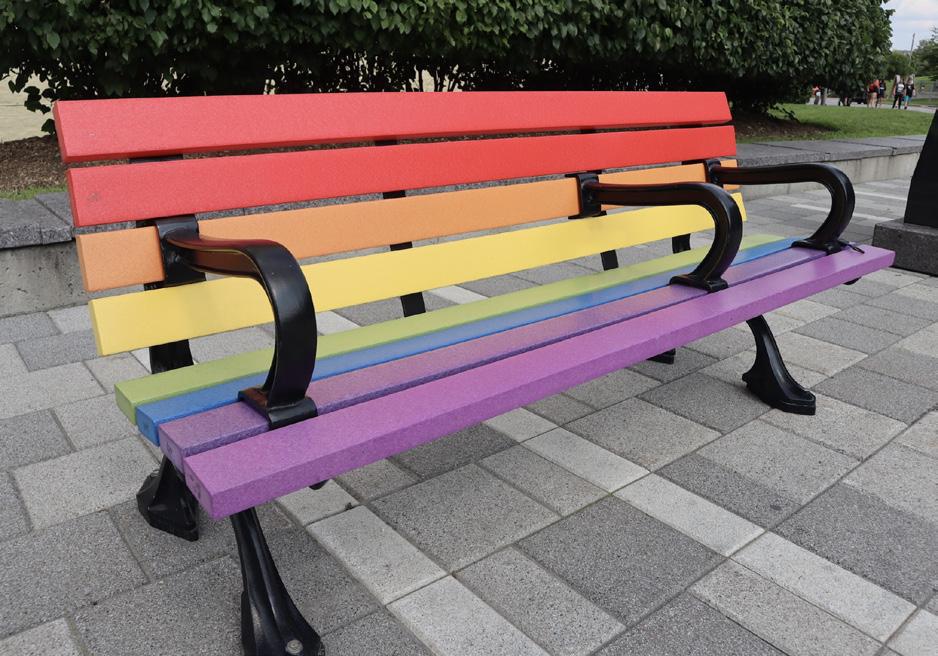


There will not be a magic day when we wake up and it’s now okay to express ourselves publicly. We make that day by doing things publicly until it’s simply the way things are. —
TAMMY BALDWIN





BY CHARLIE SENACK
The 1970’s were a time of flower power, Elton John and high-waisted jeans. In Ottawa and around the world, the decade marked the beginning of a sexual awakening.
Gays, lesbians, bisexuals and transgender individuals left their closets one by one to put an end to homophobic, discriminatory practices. They were tired of putting on a facade and living in fear because of who they were born to love.
On a rainy day in late August 1971, Canada’s first pro LGBTQ2S+ protest was held on the front lawn of Parliament Hill. About 80 men and women with stylish long hair, large beads and signs promoting love over hate, put themselves on display to fight for equal rights. To say it was a controversial act would be an understatement.

While same sex acts were legalised a few years prior, citizens could still be fired from their jobs and outed publicly for being gay. Police brutality targeting the community was on the rise, and gay immigrants were barred from entering Canada.
Between the 1950s and 1990s, homosexual Canadians who worked in the civil service, RCMP, and armed forces were fired because of their sexual orientation. The reason? government officials determined that homosexuality was a "character defect", and therefore a security risk because gays and lesbians could be targets for blackmail by the Soviets.
In the 1960s, Dr. Frank Robert Wake, a psychology professor at Carleton University, developed an array of tests aimed at identifying and then eliminating
gay individuals who were working in the Canadian government.
Labelled the “fruit machine”, or the homosexuality test, it was designed to measure perspiration and pulse such as pupil dilation when the subject was shown same-sex nude or semi-nude images. It garnered faulty results. To begin with, researchers failed to take into account the varying sizes of pupils and the differing distances between the eyes. Pictures of the suspected homosexuals’ eyes had to be taken from an angle, and the brightness of light coming from photographs changed with each image.
For over four decades, approximately 9,000 Canadians were marshalled into small, windowless interrogation rooms and questioned regarding the possibility that they were gay. If they admitted to it, they were forced to resign or they were abruptly fired. Their careers, self confidence, and privacy were ripped away from them. Opportunities for promotion, severenance, benefits and a pension were also stripped.
Long-time Ottawa resident Michelle Douglas always wanted to serve her country and had aspirations of becoming a military police officer. She joined the Canadian Armed Forces in 1986 and was quick to climb the ranks. Douglas was the top of her class and a hard-working, loyal soldier. Then suddenly her world changed.
I know exactly who it was who reported me to the police. I consider it a shame on them because I was a good officer. It was astonishing to imagine that I’d somehow be reported because I had fallen in love with another woman.”
Douglas had just begun working in the special investigations unit in 1989 –ironically the division assigned to investigate homosexuals – when a superior officer said they were leaving immediately to investigate a case in Ottawa. That was a lie. When the car Doulgas was in approached the Toronto Pearson Airport, it abruptly turned into a nearby hotel parking lot.
“I spent the next two days being interrogated about my sexual orientation. It was a very stressful and difficult time,” Douglas remembered. “It was humiliating, degrading and shameful. It was shattering. I was a young woman, at the top of my class.”
For hours, Doulgas denied her attraction to females. She refused to give up the names of other Queer officers, and wouldn't take a polygraph test. In the end she chose truth over fear and admitted to being gay.

Douglas was almost immediately discharged because she was “not advantageously employable due to homosexuality.”

“I had the lovely experience of falling in love with a fellow officer and she was lovely,” Douglas explained to KT. “Somebody went and told the military.
In January 1990, Douglas launched a $550,000 lawsuit against the Department of National Defence. In October 1992, after reversing its ban on LGBTQ soliders, the military settled the legal challenge just before it went to trial.
Continues on page 20



Insert: Michelle Douglas after entering the Canadian Armed Forces.
PROVIDED PHOTO.
Top left: LGBTQ2S+ members march outside Ottawa’s Police Station for equal rights on May 28, 1967.
CREDIT: CA-025625
Top right: When demonstrators marched for equal rights, it was still possible to be fired and outed at work for being gay.
CREDIT: CA-025631
Bottom left: A gay rights protest over CBC ad discrimination in front of the Chateau Laurier in Ottawa dated Feb. 19, 1977. CREDIT: CA-025638
Bottom right: Two demonstrators hold hands at a Gay Liberation March on Parliament Hill dated Aug. 28, 1971.
CREDIT: CA-026028
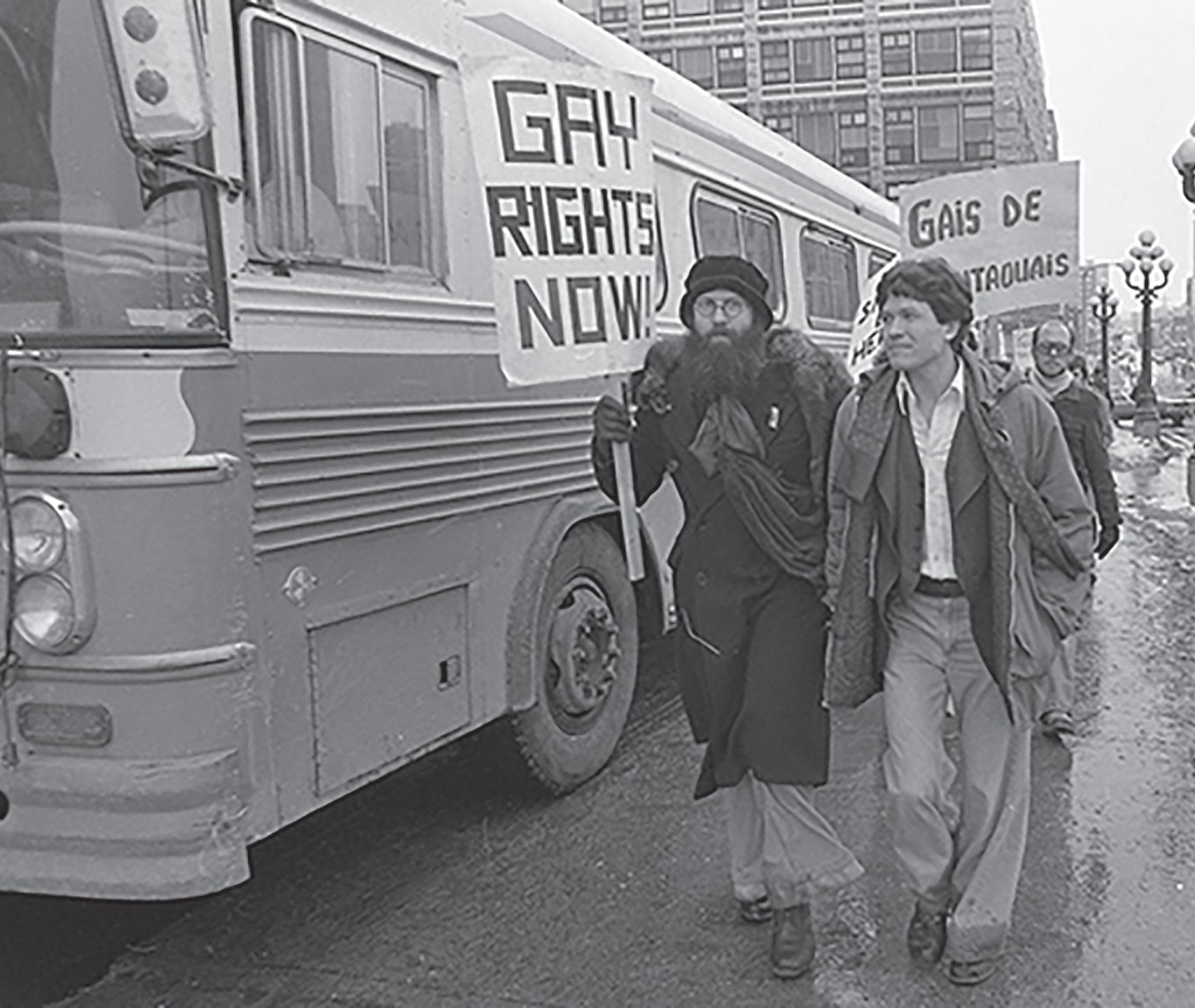







Continues from page 18
“Ending discrimination by policy does not just end discrimination,” she said. “It’s been a 30 plus year pursuit working in reconciliation, working on ensuring policies improve and change and that protections exist. People can no longer be fired on the basis of being queer. Gender confirmation surgeries [for members] are now paid for by the Canadian Armed Forces.”

One of the most open acts of homophobia in Ottawa occurred in Wellington West on May 21, 1976, when a gay bathhouse at 1069 Wellington Street West was raided. Police stormed the underground building and arrested 27 naked men – 22 who were charged as ‘found-ins.’ Their crime? participating in same-sex activities.
Club Ottawa owner Peter Maloney said financial documents and the bathhouses membership list of 2,400 names were seized – an easy way for police to see who in the city was living a double life.
At trial, Maloney was found guilty and was given a discharge on the basis of one
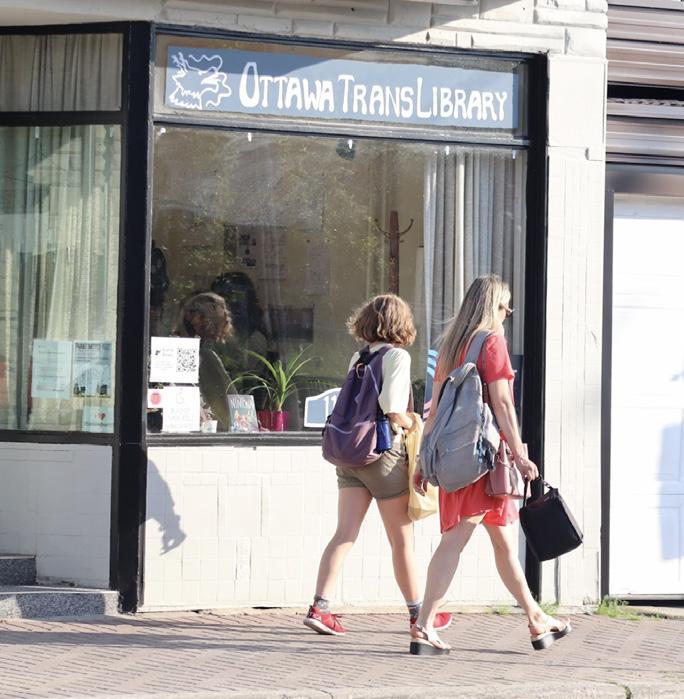
Lemoine carried her own sign which read “These People Are Nuts” and told the Ottawa Citizen that she was disturbed their messages would “create great intolerance which can lead to such things as murder. If they believe they are Christians, they’re certainly not acting that way.”
In 1993, Alex Munter, then a young city councillor for Kanata, came out as gay in an opinion piece published in the Ottawa Citizen. He was the Ottawa area’s first openly gay politician.
Far left: Tara Sypniewski was a founding member of Gender Mosaic and now runs Wellington West’s Ottawa Trans Library.
PHOTO BY CHARLIE
SENACK.
Left: The safe space located at 1101 Somerset St. W hosts a variety of inclusive events including parents nights for guardians of trans kids.
PHOTO BY CHARLIE SENACK.
Insert: Munter was Ottawa’s first openly gay politician.
PROVIDED PHOTO.
A few months before his public announcement, Munter and his then boyfriend were stopped on the street and faced homophobic remarks by a carload of young men. The hatred didn't stop there.
“People wrote letters to the editor of my local newspaper in Kanata basically saying I wasn’t capable of being a councillor because I was a gay person. There was quite a concerted effort and it created a climate,” Munter recalled to KT. “There was a lot of homophobic vandalism of my campaign materials and signs.”
year’s probation. Andrew MacKey, the 28-year-old who managed the Club, pled guilty and was fined $500.
Fifty years later, Club Ottawa remains open, yet most who pass its subtle door between Central Spa and Bread By Us would never know it exists. No signs advertise its presence, and no widow's peak out of the underground space that includes saunas, lockers, showers, and private rooms.
On Aug 2, 1999, a group of 10 American anti-gay demonstrators protested in front of the Supreme Court of Canada. Their posters were seized and they were questioned for hours at the Macdonald-Cartier International Airport.
They were followers of anti-gay pastor Rev. Fred Phelps. Their discontent came after the Supreme Court of Canada ruled that the definition of common-law marriages must also include homosexual couples.
The group marched outside of All Saints Westboro Anglican Church and Westboro Baptist Church. They sang songs and chanted “God hates Fags.”
Richmond Road area resident Lean
Munter used it as an opportunity to speak out about the harsh treatment gay people faced compared to heterosexuals, and said he joined the NDP 10 years prior because it was a party “that had always fought for the rights of people like me.”

In fact it was former Ottawa-Centre NDP MPP Evelyn Gigantes that first proposed a legislative amendment to outlaw the discrimination against gays and lesbians under the Ontario Human Rights Code. It was passed 64–45 at Queen’s Park a month later.
“The province has been contemplating legal recognition of lesbian and gay relationships for over two years. Its now time for action,” Munter wrote. “In every community, including my city of Kanata, gay and lesbian couples are raising children, yet their legal rights are murky.”
Munter knew he was gay in high school and was open with his family and friends before sharing that part of himself with the world. He said it felt “dishonest” and “untenable” to live under the “don't ask, don't tell model.”
But there was love and acceptance too. Munter said the evening before his op-ed was published, he drove around town putting letters in mailboxes of supporters who he wanted to know the news before it was public. Munter recalled how one woman, an evangelical Christian who left the United Church when it began to ordain gay people, drove over to his house for a hug and encouraging words of love and acceptance.
Munter still went on to win that year's municipal election and continued to serve on council until stepping aside in 2003.
In 2019, Munter, now CEO of the Children’s Hospital of Eastern Ontario (CHEO), received an anonymous letter in the mail with no return address. It came from one of the teenagers who defaced his election signs.
“I am truly sorry for doing this to you. We were dumb teenage boys,” the hand-written letter read. “You are an outstanding member to the community and are truly special. All of us that did this to you are now adults with kids of our own. We are all inclusive and are definitely not prejudiced to anyone in the LGBTQ community.”
When Munter was first discovering himself, the former politician and newspaper publisher said he was growing up between two generations: the homophobic practices of the 1950s and 60s were largely over, but the connected generation of today with access to countless resources had not begun.
“It was a lonely time because I was living with a secret,” said Munter. “I knew gay people were out there but there was no way for me as a high school student to have peers or support or anything like that.”
In 1984, activist group Gays of Ottawa launched Pink Triangle Services, known today as Kindspace, to act as a refuge for LGBTQ2S+ people who were finding themselves.
Today Kind Space operates out of 400 Cooper St. and sees about 50 people pass through its doors on any given week. The centre is used to house drop-ins, host events, and offer resources.
“It’s important to have a space like Kind Space because look at the state of the world. When we started in the 80s acceptance for queer and trans people was not very high,” said Kind Space executive director
Carling Miller. “Even though there are more protections legally for queer and trans people, we still have a high percentage of kids that get locked out of their families for being who they are. There is still a lot of shame that is carried by people who have those identities. Our identities are often weapons, especially in politics for political gain. They are used as a ‘boogeyman' or justification for why violence can or should be done against us.”
Capital Rainbow Refuge is another non-profit organization that helps Queer individuals in other countries immigrate to Eastern Ontario. The group was volunteerrun when founded in 2010, but this year hired six staff. Over 100 Queer people have been assisted in the last decade-and-a-half.
“Everyone deserves a safe home. In

more than 70 countries people are suffering because of who they are. There are police actions and family problems,” said Nini Rossi, fundraising and communications coordinator at Capital Rainbow Refuge. “For many, their only option is to flee their countries and homes for a safe haven.”
Many of the clients are from Middle Eastern and African countries such as Palestine, Saudi Arabia, Afghanistan, Ghana, South Sudan, and Algeria. In some of these places, you can still face the death penalty for being gay.
Earlier this year, Rainbow House opened which offers refuge to the LGBTQ2S+ newcomers.
“It’s an opportunity we had to partner with Matthew House and we currently
accommodate nine residents by helping them through establishing themselves here in Ottawa,” said Rossi. “They can stay three to six months and have access to essential services like making friends, finding jobs and housing.”
It is often said that trangender rights are about three decades behind those of LGBTQ2S+ people. Possible accounts of transgender lifestyles date back to before the mediaeval times, but the term itself goes back to the 1950s.
Gender Mosaic was formed In 1988 as an Ottawa-based trans social and support group, the first of its kind in Canada. It started off small and in secret. Crossdressers and transsexuals were vetted, meeting inside homes and restaurants.
Tara Sypniewski was one of the founding members. Today she operates Wellington West’s Ottawa Trans Library, a safe space where members and allies of the community are able to gather to read about a forgotten history while meeting others with shared experiences.
Continues on page 22





Continues from page 21
“I know what it was like when I was young and it was very hard. We have a lot of young people coming in and it’s a pay it forward kind of thing. You can’t forget about where you’ve been,” Sypniewski told KT. “Trans people get erased a lot but we’ve actually been around for a long time. History is a reflection of that and it tells people what we were doing. It could have easily been lost.”
Sypniewski also founded Trans Ottawa, a website that documents the history of transgender people in Ottawa. The librarian herself had to put on the false facade of a

man at work for fear of losing employment. That double life persona lasted decades until she fully transitioned about eight years ago.
In early days, Clarke Institute in Toronto was formed to help people transition. Except that didn't really happen. Its whole reason for existing was to deny treatment to trans individuals, admitting later at a human rights tribunal that they rejected over 90 per cent of people who asked for help.
“For me it was a question of coping. I was living relatively freely on one hand, but I wasn’t living fully as myself,” admitted Sypniewski. “Part of the reason I started


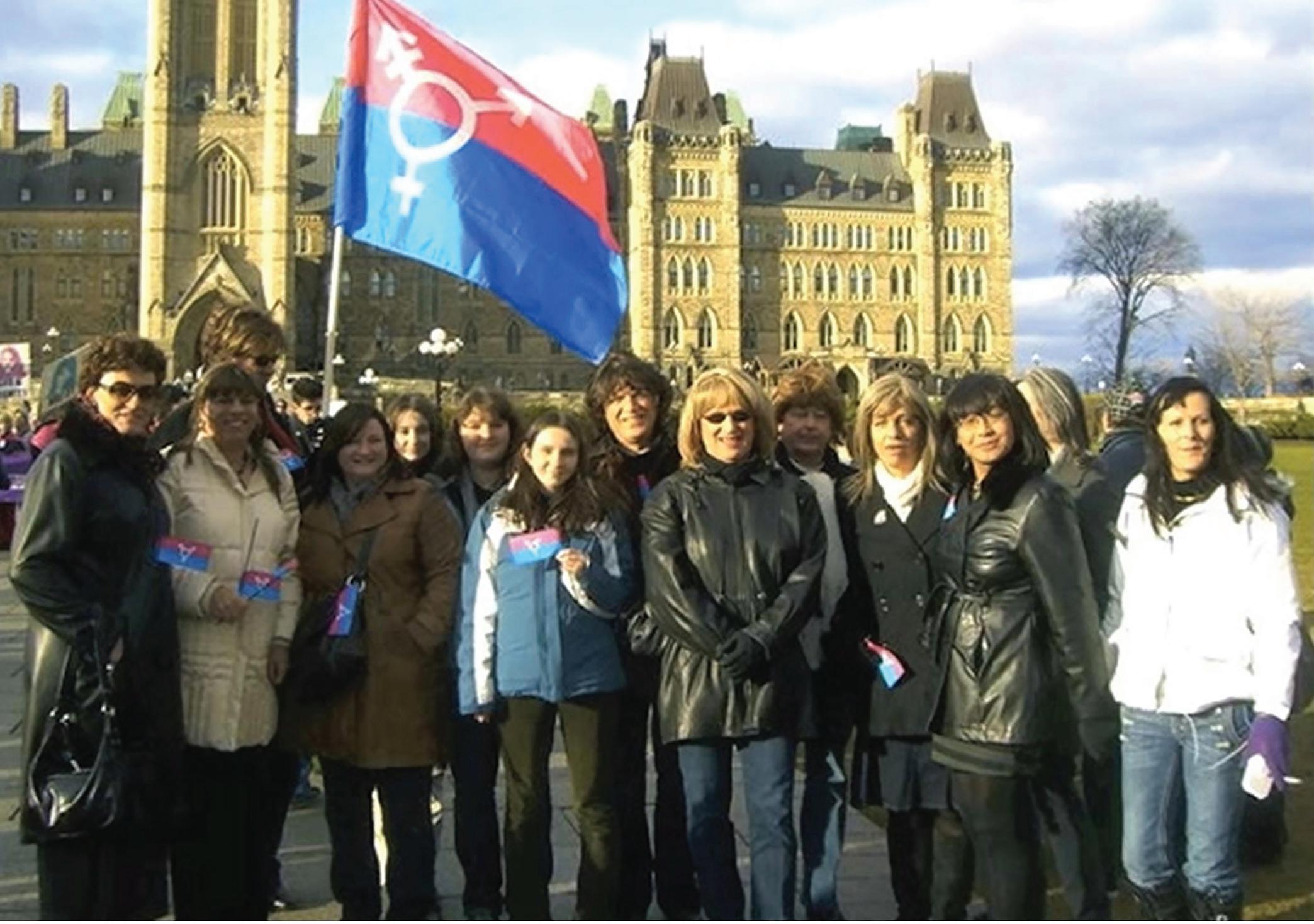
Transgender Day of Remembrance in Ottawa in November 2011. PROVIDED PHOTO.
doing all this is for coping and to help the community along in whatever way I could.”
In the last decade, trans rights have improved, but there's still a long way to go.
In June 2017, government passed Bill C-16, which amended the Canadian Human Rights Act and Criminal Code. It prevents violence and discrimination against individuals on the basis of gender identity or expression “within the sphere of federal jurisdiction.” Gender identity is now defined as a person’s “sense of being a woman, a man, both, neither, or anywhere along the gender spectrum.”
But while progress has been made, there’s no guarantee it will not be reversed. In Saskatchewan, a bill was passed last year requiring students to get parental consent to change their pronouns. A similar rule applies in New Brunswick. Alberta Premier Danielle Smith changed policy to ban hormonal treatment, puberty blockers and gender-
confirmation surgery for children 15 years old and younger – the most restrictive rules on gender confirmation in Canada.
Rebecca Bromwich, an adjunct professor with the Department of Law and Legal Studies at Carleton University, says that when governments give permission for citizens to be homophobic, people will run with it.
“One of the things I have been surprised by is how much homophobic redirect my kids were hearing. It shocked me because there has been so much legal change, but kids still catch on to what's happening in culture.,” said Bromwich. “I would say relative to other places Ontario and Canada right now are generally better places for people who are in the LGBTQ+ community, however that’s not static and we should never assume a narrative of progress. Look at what happened with reproductive rights in the United States in the last couple of years.”





















BY BRADLEY TURCOTTE
The Ottawa Gay Men’s Chorus (GMC) sings through the decades Aug 21 with a Capital Pride performance of Let’ Dance at The Gladstone.
Founded in 1986, the same year the city first officially celebrated Pride, the GMC is a non-audition choir with member ages ranging from twenty-something to 88.
Centretown West resident Charlie Thompson joined the chorus in 2023 when a neighbour asked him to be “choir buddies.” His friend dipped, but Charlie “loved it” and plans to perform with the chorus “for the foreseeable future.”
As a non-audition collective, Thompson says you can read this many ways. Thompson says he reads this as the GMC being “non-judgmental.”


“In multiple dimensions of that term. Not only in the queer dimension of it but also in the musicality,” Thompson continued. “We have people who have robust backgrounds in music. Then we have people who are shower singers, and we have people who have never sung at all. It is very rewarding to see people come into their own voice through their participation in the choir. Unlike other organizations of this type where you might feel constrained, whether it’s your natural talent or your baggage or privilege you may bring, you can leave that at the door in this choir because you are going to be welcomed.”
Thompson previews Let’s Dance as “very lively” with dancing being part of the show.
“I don’t mind saying that I am one of the dancers,” Thompson laughed. “We call it the ‘choralography’ contingent.”
Let’s Dance features “everything you used to hear in the discos in the ‘70s to house parties in the ‘80s and ‘90s and into the 2000s.”

The Gladstone Theatre has unveiled its 2024-25 season lineup.
The local talent will begin Oct. 17 with Cautionary Tales: A Daniel MacIvor Double Bill, presented by Plosive Productions and Sunny Ryan Productions. Other professional productions include The Children by Lucy Kirkwood from Feb. 20 to March 8, and Silent Sky from March 20 to 29.
Brand new theatre companies will also be part of this season's mix. Misery, based on the book by Stephan King, will be performed from Jan. 24 to Feb. 1 and Late Company by Jordan Tannahill will take the stage from Feb. 5 to 15
GMC president Guy Delorme, a member for 13 years, said the repertoire includes songs from the Black Eyed Peas and Lebanon-born singer Mika.
This is GMC’s first Pride show in its 38year history. Delorme said that since the show is on a Wednesday, “it breaks up the Pride week, just before the full festivities.”
Gay men are shown to suffer from high rates of mental health issues, and singing regulates the central nervous system, in addition to other positive effects.
“It helps you to focus your mind on one activity for a period of time. Now people are multitasking on everything and anything. When you perform a song, you really have to pay attention, which is very positive for the brain,” Delorme says.
“For the older singers, it is a good activity that keeps their mind sharp because it is a matter of being able to assemble some information and use it to sing a song.”
As connections through technology replace in-person activities, Thompson said getting together with like-minded people to do something you enjoy is paramount.
“A lot of the infrastructure we inhabit, such as social media, makes it more and more difficult to actually get together and do a thing. It’s easy to register your opinion online but it’s hard to get together with people and do something that is fun. We forget that that is what the best parts of living are - to have a sense of community in a world where it is getting harder to maintain these communities.”
The Ottawa Gay Men’s Chorus presents Let’s Dance.
On the community side, audiences can look forward to seeing their neighbours in shows from the Phoenix Players, TotoToo Theatre, and the uOttawa Theatre Club. A highlight of the community theatre lineup is 1979 by Michael Healey, presented by the Phoenix Players, which examines a monumental moment in Prime Minister Joe Clark’s career.
“As you all know, the beauty of independent theatre is how different each show is,” said Robin Guy, the Gladstone’s theatre manager in a news release. “And yet, as unique as all these shows are, they share a common theme: the desire to know and be known, which is something we can all relate to. We can’t wait for theatre lovers to see these stories come to life.”
Visit thegladstone.ca for more information.
• Before 1890, Canadians caught engaged in homosexual acts were charged with buggery and indecent assault upon a male. It was later changed to gross indecency. Prior to that, flogging or even death was sometimes the penalty.
• The earliest reports of gay cruising spots in Ottawa come from Bowles Lunch, a diner which was located at 30 Rideau St. Such incidents were also reported at nearby Rideau Bowling Alley, the Grand Central Hotel in the ByWard Market, and other nearby drinking holes. The YMCA, located at 123 Metcalfe, was also a prime social spot as it was a males-only club. Because the fabric of bathing suits clogged drains, men were
expected to swim naked in the early days.
• The Lord Elgin Hotel, built around the time of the second World War, was Ottawa’s first semiofficial gay bar. In the downtown tavern called Pick’s Place, plain-clothed RCMP officers would hide behind newspapers and photograph gay men for identification later. In 1981, management closed the bar at 3:00 p.m. as they had enough of their fruity clientele. Bartenders retaliated and opened the city’s first gay bar called 166B around the corner.
• In 1959, the RCMP started a humiliating campaign to identify homosexuals working in the public service. Using what was
called a “fruit machine.” they checked pupil size, palm sweat and blood flow while showing the suspected LGBTQ individuals gay porn. A total of 8,200 homosexuals were identified –about a third of whom resigned or were dismissed because they were gay. The practice went on until 1975 when pushback from the Canadian Council on Religion and the Homosexual, which had been formed a decade prior, became too much.
• Since 1975, 19 gay men in Ottawa have knowingly died as a result

of being killed or committing suicide because of their sexuality. They include Chris Raynsford, a 34-year-old gay man who was killed by someone he met online. His body was found in his Centretown apartment two weeks later. Jamie Hubley, the son of Kanata councillor Allan Hubley, committed suicide in 2011 after reoewred bullying. In grade 7, classmates attempted to shove batteries down the figure skater's throat. In a suicide note posted to a blog, Jamie wrote: “I'm tired of life, really. It's so hard, I'm sorry, I can't take it anymore.”




BY CHARLIE SENACK
Why do we celebrate Pride? It's a question many ask themselves decades after the Stonewall riots, the decriminalization of gay acts, and the legalization of same-sex marriage.
While there has been progress, the movement continues for many Queer folk who are still fighting for equal rights. According to 2020 stats, it was still illegal to be gay in 70 countries – roughly one third of the world. Twelve of those countries still have the death penalty if you are caught or suspected of being part of the LGBTQ2S+ community.


Even in Canada, progress is relatively new. Most living generations were born in a time during which equal rights for Queer folk were not the ‘norm’. Same-sex sexual activity between consenting adults was decriminalized in 1969, with same-sex marriage becoming legalized in 2005 — the fourth country in the world to do so. On June 11, 2003, Renée Sauve and Tracey Braun were Ottawa’s first gay couple to get married. Bill C-16, which supports the rights of transgender or gender diverse individuals was passed in 2017, and conversion therapy was banned in 2022.
city – some of which have happened in Kitchissippi’s own backyard.
1916: A public servant by the name of Charles P. was charged with gross indecency after an encounter “with a young fellow” named James at Elgin and Nepean Streets downtown. According to historical accounts from Charles, the relationship began when James asked if he liked to sing and invited him back to play the piano. Police found out about the pair's connections when they picked up James on a house-breaking charge a few weeks later.
In court James testified: “He asked me to go into bed with him… I was about 45 minutes with him. He felt me all over with his hands.”
The case was later dismissed after Charles’ friends spoke to his “reputation of morality.”

In 2024, acceptance is encouraged, but not always present. Last year, demonstrations were held in Westboro to try and silence members of the LGBTQ2S+ community and reverse course on decades of progress surrounding basic human rights. Combiing through old newspaper clippings and historical accounts of what life was like for Queer individuals in Ottawa, KT compiled a timeline of Queer-related events which have touched Canada’s Capital
AUGUST 30, 1971: About 80 men and women who supported homosexuals demonstrated on the front lawn of Parliament Hill – the first time a demonstration of this kind was held in Canada. Billed Gay Day, it was calling for an end to the discrimination against homosexual individuals.
OCTOBER 16, 1974: A dozen Gays of Ottawa members paraded in front of the Immigration department offices and handed out brochures stating that Section five of the immigration act was homophobic. It prohibited the entry of Queer people into Canada and labeled them as “undesirable types.” Earlier in the day, organizers from the group met with senior officials of the immigration department to protest the move.
“As it stands, it’s illegal to let homosexuals into Canada, but once you are here, it is legal,” Ron Dayman, chairman of the Gays of Ottawa committee, told the Ottawa Citizen. “The people we talked to within the department agreed the law was medieval, archaic and that it should be changed.”
MARCH 21, 1975: Fifteen representatives from the group Gays of Ottawa protest outside of the Ottawa Journal newspaper building and the city police station. Organizers said they were against discriminatory laws and persecution from members of the media and police officers against homosexual individuals.

Their outcry came after 34-year-old Warren Zufelt jumped to his death from the rooftop of his condo building at 20 Chesterton Dr. in Nepean. The public service worker was accused and charged with gross indecency in connection to a male prostitution ring involving juveniles. The ring uncovered March 4, 1975 also led to the arrest of 17 other men. Their names and addresses were posted in local media Speaking with the Ottawa Journal, Zufelts’ lawyer Leonard Shore, who met with his client a day before his suicide mission, said the gay man “was very upset and nervous and didn’t know what to do.”

A news release from protest organizers said “continued police persecution amounts to a homosexual witch hunt.
Sensationalistic headlines and reportage have totally distorted the nature of these cases and created an atmosphere of hysteria. These persons are suffering the penalties of convicted persons even before trial.”
During the trial branded “Ottawa’s sex scandal”, it was revealed the 16-year-old prosecution chief witness was coached on what to say by police. The youth committed suicide during the trial.
MAY 25, 1976: The Wellington Street West gay bathhouse was raided. Police charged two men with gross indecency and 22 others with being “found-ins". Marcel Rollin, 27, Jean Danfousse, 25, and Andrew Mackey, 28, were also charged with keeping a common bawdy house.
After the raids, Gays of Ottawa group organizers blamed the raids on an effort to clean up Canada in time for the upcoming Montreal Summer Olympics.

FEBRUARY 15, 1980: Ottawa gays distributed leaflets outside the Elgin Street theatre to protest against Cruising, a controversial film with Al Pacvno. American gays said the movie provided a “how-to” course on how to kill homosexuals. “We dont blame movie audiences, because


OPPOSITE PAGE left to right inserts: In August 1971 a group of brave LGBTQ2S+ folk were the first to advocate for equal rights. CREDIT: CA-025598. Chesterton Towers in Parkwood hills is where Warren Zufelt jumped to his death.
PHOTO BY CHARLIE SENACK. Gay rights demonstrators outside the Ottawa Journal Towers on Kent Street following the death of Zufelt. CREDIT: CA-025566. Top: Marchers link arms on Parliament Hill in 1975. CREDIT: CA-025595
THIS PAGE clockwise from top: The discreet entrance to Club Ottawa in Wellington West. PHOTO BY CHARLIE SENACK. LGBTQ2S members and allies carry a trans flag down Broadview Ave on June 9, 2023. PHOTO BY CHARLIE SENACK. By 1975 the fight to change human rights to support gays was growing. CREDIT: CA-025592 A large audience at the National Gay Rights Conference at the University of Ottawa. CREDIT: CA-025580
they have no choice” Gays of Ottawa spokesperson John Duggan told the Ottawa Citizen. “We blame the movie industry for not portraying a true image of homosexuals.”
FEBRUARY, 25, 1981: Ontario gays waged a campaign to turf New Democratic Leader Michael Cassidy from his OttawaCentre seat. The gays said Cassidy did not show enough support during the controversial Toronto steambath raids. Organizers urged gays to spoil ballots and embarass candidates at riding meetingsparticularly in Ottawa Centre. The pushback came a month after more than 200 Toronto police raided four Toronto steam baths. Hundreds of men were charged.
SEPTEMBER 28, 1981: About 25 queer individuals protested outside of the United States Embassy in Ottawa, to demonstrate against an immigration law in that country which they claimed labeled homosexuals as “Psychopathic.” Gays of Ottawa organizers also said homosexuals were harassed at the border and forced to state their sexual orientation before gaining entry.
AUGUST 1983: Two known cases of Aids are reported in Ottawa and seven others are suspected. The first case was Peter Evans, a bisexual man in his 30s. The actor who recently returned from living in England
participated in the city’s first AIDS walk-athon. He died the following January. The second case was a 28-year-old battling the disease.
Fear amongst Ottawa’s gay community starts to spread and questions mount over whether or no bathhouses should be closed.
“Bathhouses are not filthy holes in the wall,” then Club Ottawa owner Jerry Levy told the Ottawa Citizen. “They are extremely clean and brightly lit and probably mitigate the spread of AIDS. The steambaths are far healthier (to have sex in) than parks and bars.”
JUNE 15, 1987: The National Capital Commission considers new landscaping and the RCMP promises to do more monitoring after nearby residents complain about gay cruising occurring at Remic Rapids Park. In letters sent to the NCC, parents stated their kids were picking up used condoms which were littered around the park.
1988: Bruce House is created to provide service to residents who are dying from AIDS. The disease was a death sentence that carried stigma and the organization wanted to provide the sick with dignity in their final days. The first home opened on Arlington Avenue and later moved to Everand Avenue. The service still runs today,providing stable housing, independence, and healthy living.

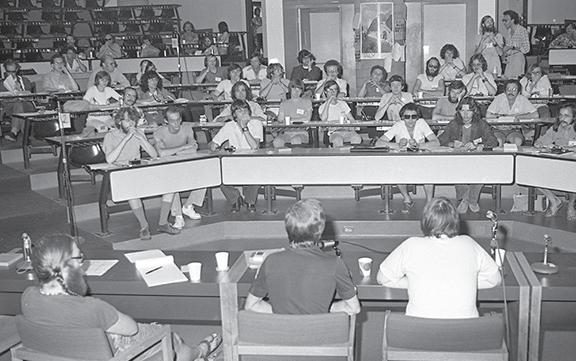
1989: At least 15 incidents of violence and hate crimes are reported targeting Ottawa’s LGBTQ2S+ community. Seven gay men are pushed off a cliff at Major Hills Park, with two dying from their injuries.
On Aug. 21, Alain Brosseau was dangled over the Alexandra Bridge connecting Ottawa to Gatineau and fell to his death in the water below. While Brosseau is believed to be straight, his killing was done on the assumption of him being gay because of the shoes he wore. That same night, Alain Fortin and Wilfred Gauthier were stabbed in their Orleans home by the same gang members. Both managed to survive.
JANUARY 11, 1994: A new gay bathhouse is approved by Ottawa’s planning committee on Lewis Street near Bank Street, but Club Ottawa owners are not pleased. Levy sends a six-page letter to the committee casting doubt on the credibility of the owners. According to the Ottawa Citizen, there were allegations of drunkenness, verbal abuse, and threats of intimidation.
FEBRUARY 7, 1996: About 15 demonstrators who were gay, bisexual, and lesbian, disrupted a Red Cross Blood clinic being held at Carleton University. They were protesting a health assessment questionnaire that they said discriminated
against gay men. The question, in place since the 1980s, asked men if they had sex with other males since 1977. If the answer was yes, they could not donate blood.
MARCH 28, 2001: Disease breaks out amongst users of the Capitals two bath houses. Ottawa Public Health said six cases of syphilis and one suspected case of the disease were reported in the city – some of whom had contact with the sex clubs.
AUGUST 26, 2003: On August 23, 2003, thousands rallied on Parliament Hill and on the Steps of the Supreme Court of Canada to show their opposition against same sex marriage which would become legalized two years later.
JUNE 9, 2023: A “gender ideology” demonstration is held outside Nepean High School and Broadview Public School in Westboro. Organizer “Billboard” Chris Elston rallies against puberty blockers — also known as hormone blockers — which are seen as a lifeline for transgender individuals. Children stomped on pride flags as parents, many who flew in from the United States, chanted homophobic remarks. Five people were arrested but no charges were laid. Counter protesters made up of LGBTQ2S+ members and allies of the community held colourful banners and sang chants of love and acceptance.



BY HANNAH WANAMAKER
KJ Forman’s “soft art with a hard edge” includes a punchy feminist phrase with flower and skull designs to represent beauty and hardship.
Through their ups and downs, art has been the means through which Centretown resident Forman has explored their nonbinary identity and empowered many.
In 2018, Forman debuted their art at their first market of many, the Feminist Fair.
“I remember there being a lot of queer people and I remember feeling that I belonged there,” Forman recalled. “It was essentially all feminist makers sharing their art. I had a table there and didn’t know what to expect but it was the best day ever. I had an amazing time and I remember feeling at the moment: this is what I want to do.”


Now six years later, Forman says they would have never thought a blossoming career as an artist was possible.
They first sold prints for their original business, Lucky Little Queer, but quickly began experimenting with other mediums. Forman creates designs digitally to feature on t-shirts, stickers, totes, pins and patches, but they have also worked with fibre arts, swimsuits, and painting over records.
“I like to do one-off illustrations that are easy to put on stickers and things that people can share whenever they want. Art that people can take with them is something I really like,” they said. Forman’s phrases and doodle ideas accompany spur-of-the-moment thoughts, emotions and memories.
Through their first five years as Lucky Little Queer and their rebranding to Luck and Lavender for the last two, Forman has also made strides to reclaim their identity and embrace joy from their queerness.
The expectation that being non-binary means a masculine or androgynous appearance has always felt uncomfortable

for the artist who prefers presenting more femme. During the pandemic, they discovered that they felt more themselves when they stopped conforming to the traditional ideals.
“I’m read as quite femme but that doesn’t make me any less non-binary than other people.”
Wellington West resident Darby Babin, who is also non-binary and Forman’s longtime friend, echoed these challenges.
“The short hair and all the things we feel we have to be when we were newly out as queer – it can be hard to claim any femininity you may like when you feel you have to perform. They’ve rebuked that idea that all non-binary people have to have the same androgynousness,” Babin said.
To combat these stereotypes, Forman designed a piece that said ‘Femmes can be thems.’ Earlier this year at Toronto Pride, they were approached by another femme-presenting non-binary person
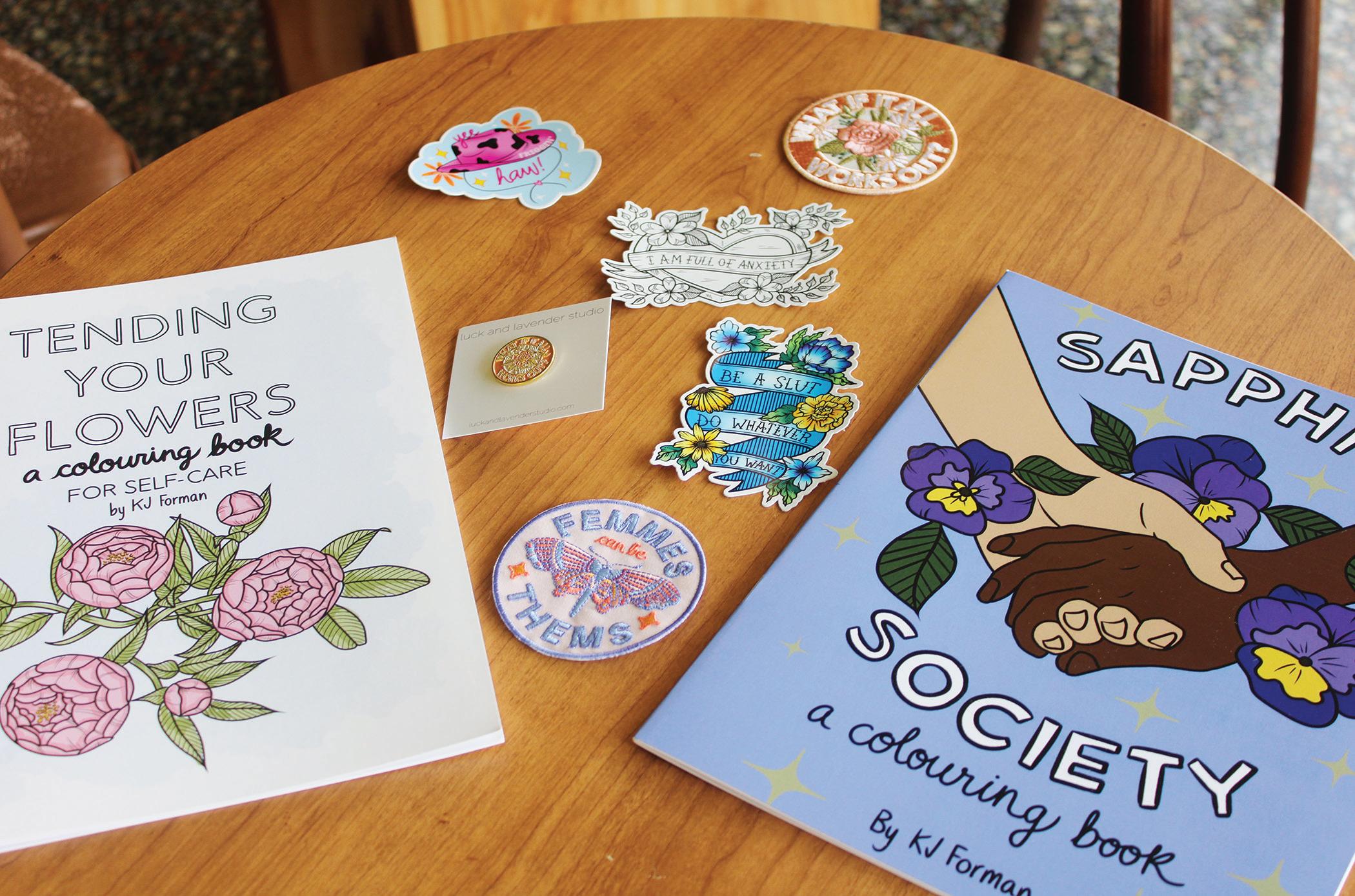

Centretown artist KJ Forman has created a variety of adult colouring books, patches and stickers.
who had similar experiences.
Many non-binary and transgender individuals are accustomed to others being unable to see them the way they see themselves. Babin added that many feel like they owe parts of themselves to others.
“I don’t know if people notice this about the non-binary people in their lives but we get misgendered 1000 times a day every day because people have a very limited view of what gender identity can be,” Forman says. It's easier to accept this reality rather than correct others. Femme-presenting people, including Forman, have been discouraged from sharing their non-binary identity as well because their queerness is taken less seriously than masculine-presenting people. This was a common barrier they experienced while trying to make a name for themselves earlier in their career.
Alongside the Luck and Lavender collection of punchy feminist phrases, Forman has created mental health
designs. These are inspired by their own experiences but have resonated with the artist’s growing audience.
“It's something I do for myself, but I find it opens up a larger conversation about mental health which isn’t something I intended to do, but it's really beautiful to actually see,” they said, adding that people often see themselves in Forman’s work.
While waiting for a doctor’s appointment, Forman wrote ‘I am full of anxiety’ inside a banner on a tattoo-style heart. Now one of their most popular designs, Forman noticed post-COVID an increased demand for their mental health pieces.
‘What if it all works out,’ another popular phrase, was coined in a therapy session years ago to rebut their catastrophic thoughts and remind themselves that the good also exists.



BY SIMON HOPKINS
Ottawa Pride Hockey’s four teams will play in its own division of a recreational hockey league in Ottawa starting in the fall. The LGBTQ2S+ organization has two teams currently competing in a men’s rec league, but is growing as more Queers lace up their skates.
Ottawa Pride Hockey co-founder and player Kat Ferguson is excited about the popularity of the relatively young sports group. It was inspired by a trip Ferguson took with a friend to Boston to participate in a Queer hockey tournament.
It wasn’t a new venture for Ferguson, who has played hockey their entire life and never felt unable to participate because of their identity. But now they felt immediately at ease and accepted playing on Team Trans.

Ottawa Pride Hockey isn’t the only group taking to capital ice in the winters.
Ottawa’s Rainbow Rockers have been sliding on the ice at the Ottawa Curling Club for twenty years. The club has been home to the LGBTQ2S+ curling league since it consisted of just a few teams in the early years. Now, the league has 42 teams and a waiting list of eager spares.
encouragement from some friends, already Rockers themselves, convinced him.
Buffel said he lacked any curling skill to start but progressed with time. Now, he’s an experienced curler with an eye for the game's strategy.
“It was something that I didn’t know I needed, but it was just such a relief not to be worried about stuff like surgery scars or people asking who your spouse is and feeling like you have to lie,” they said.
Ferguson began Ottawa Pride Hockey’s drop-in pickup games in 2019; since then, the organization has grown. After the pandemic, the group has hosted learn-to-play clinics, and its team has joined an Ottawa recreational league division.
“We opened our registration, and we filled up all four teams within a matter of hours,” said Ferguson. They’re super excited about the community's enthusiasm towards Pride hockey's future in Ottawa.
“I get so much joy out of bringing people back to the sport because they didn't feel like they had a safe space to play for years, and introducing new adults into the sport when they never felt that they had a space,” said Ferguson.
“We have about 175 curlers and then probably 15 more people on the spares list,” league president Kevin Horwood told KT.
“It’s been a very successful league.”
The teams of four are broken into divisions based on skill, so players compete against others at a similar level. The friendly competition allows teams to progress to higher divisions, but at the end of the day, the Rainbow Rockers are about having fun in a loving environment.
Kitchissippi resident Chad Buffel has curled with the rockers for over 10 years. He had never curled before joining the league and was hesitant to do so, but

Unfortunately, sports teams aren’t always an environment friendly to those in the LGBTQ2S+ community. Buffel told KT he didn’t always feel comfortable in sports settings.
“When dealing with sports teams, some of the banter and teasing sometimes would make me feel uncomfortable,” he said. He said that sports can be an environment where people are unsure how being openly gay may be received.
The Rainbow Rockers is a safe space, and Buffel said that those community activities where there’s no fear of being out are important.
“It’s a signal to the LGBTQ2S+ community that there’s a space you can be a part of and feel comfortable,” Buffel said.
I get so much joy out of bringing people back to the sport because they didn't feel like they had a safe space to play for year. — KAT FERGUSON





BY HANNAH WANAMAKER
Tamra Thomson was called to the bar just three days before the Queen signed the Charter in 1982. Despite being a recent law school graduate, she already had a greater understanding of the Charter and its impact than most seasoned lawyers.
“I was very active in the development of the charter. At the calling of the bar ceremony, there’s all these old white men onstage, judges and senior lawyers, and they’re all talking about this exciting time we’re about to enter, the Charter will be signed, this will be a great time for lawyers, this is going to change the law. They were talking about it as if it was theirs,” Thomson recalled.
“ I sat there thinking, how dare they? This is my charter. I worked on it. They didn’t. It was my first realization that my baby was going into the world and others were going to change it. It was the realization that this was a real thing, it was going to have a real impact and others would have an impact on it.”
While in law school during the late 70s, the Wellington West resident
was an active member of the National Association of Women and the Law.
In addition to studying the Bill of Rights and landmark cases in school, Thomson also worked with the Women’s Association during negotiations to reword certain sections of the Charter before it became law.
They were successful with Section 15 in particular which is known as the equality rights section. During negotiations, they added “equal benefit of the law” and ensured that people with mental disabilities were included in the openended list.

In the mid-90s, Thomson began working at the Canadian Bar Association, where she would stay for almost 30 years. She was hired as the Director of Law Reform and eventually became the Executive Director of Advocacy where she stayed until her retirement. In those roles, she oversaw every intervention proposal that went through the association.
One of the biggest influences on the work she accomplished with the association was the publication of a report about women in the legal profession.
A task force within the association chaired by then-retired Supreme Court Justice Bertha Wilson created a series of recommendations to remove barriers for women in all areas of the law.
These were the early days of Thomson’s work fighting for equality rights for all. Her first job after being called to the bar was with Status of Women Canada where she looked at the impact of government decisions on women.
Her government career continued several years later with Labor Canada
she worked on the foundation of workers’ rights at the federal level. During the labor strike, she met her lifelong partner, Linda, who was also working within the government.
“We really got to know each other during the public service strike. We started hanging out together and realized it was more than just hanging out together,” she said, adding that this was her first relationship with a woman.“So, a strike brought us together.”
“We needed some changes to make the law better for women,” Thomson said. “It recognized that there were other issues, including queer rights, and it recommended doing more work on those issues.”
This was revolutionary for Canadian lawyers, who had always been predominantly white, conservative males. The study ultimately recommended that the profession completely change itself and implement policies to ensure equality.
Throughout her career, Thomson
succeeded in implementing many of those recommendations.
Shortly after the report was published, the Sexual Orientation and Gender Identity Committee was created within the association. Queer lawyers and allies have joined the committee where they have informed public policy that the association has worked on.
Thomson was also successful at implementing a diversity element to the criteria for becoming a judiciary, which included taking into account the applicant’s life experience.
“Your life experience, what you bring to the bench, is an element of your skills, which is also a qualification.” She added: “Finding the best person for the job includes looking at the experiences and ensuring that there’s a balance of life experience on the table.”
In family law, Thomson was concerned with changing the equality rights of families. In law school, only the heterosexual family was considered. This meant that queer and adopted families were among those being excluded from the law.
“I happen to be adopted, so I learned from a very early age that families come together in many different ways. It isn’t just about blood.”
She worked with the association as an intervener in the Vriend case, arguing that sexual orientation should
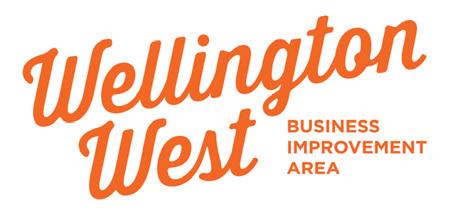

Tamra Thomson, an openly lesbian Wellington West, spent her professional career advancing law and human rights. PHOTOS BY HANNAH WANAMAKER.

be included in equal marriage and protected under the Human Rights Act.
Thomson said that it took many organizations, including the Canadian Bar Association, to get “sexual orientation into the Human Rights Act and ensure that it is interpreted as the concept evolves.”
While there were many success stories, there were also many setbacks. Thomson said that there were people who would always accept inequality as the norm, but she and many others refused to let that remain.
“Justice, equality and democracy are fragile things. You have to be vigilant of working to make them better and to keep them,” said Thomson.














BY CHARLIE SENACK
Britannia resident Ocean O’Fhloinn realized they might not be monogamous after catching feelings for someone else while in a committed relationship.
“I brought up these feelings with my girlfriend at the time, and it did not go well,” O’Fhloinn recalled to KT during an afternoon interview at Beachconers Microcreamery.
“We tried to make it work, but it didn't. We were young and she was very monogamous.
“I started to realize that I could have feelings for more than one person and that it does not mean my feelings for either one of them are any less.”
O’Fhloinn is part of the polyamory community, where people have romantic relationships with more than one partner at the same time. The name “polus” stands for “many” in Ancient Greek and “amor” is Latin for “love”.
Polyamory is different from polygamy, which involves a person, typically a male, with more than one spouse, often with strong ties to religion.

The Montreal native who moved to Ottawa when they were six has two partners: Dae Gordon and Niall MacConiall. Gordon is currently seeing two others while MacConiall is in the early

stages of dating someone new.
Gordon first met O’Fhloinn in 2010 after one of his former partners introduced the pair.
“Ocean and I hit it off pretty fast,” said Gordon. “At the time, I was doing a lot of set- up work with different furry conventions, and I brought Ocean with me. That is where they met Niall in 2012.”

A “furry” is someone who has an interest in anthropomorphic animals, or animals with human qualities. It's formed into a community where people socialize, purchase art, dance, and explore their identities. Members create a “fursona” –their own animal character – which typically are hybrids. In Ottawa, hundreds attend
CanFURence, an annual furry conference held at the Delta Hotel in August.
MacConaill grew up as a shy francophone in Quebec but was able to slowly shed his anxiety after finding acceptance in the animal-loving community. He grew up reading French comics that were full of animal characters, and immediately fell in love with the tone











and airbrushed artistic techniques. He was also a dancer, and enjoyed sharing worldly chocolate at the conventions he attended. Soon, he attracted many friends.
“That specific convention I had a special, unique chocolate from Brazil that I’d never had before. Most people went ‘eww’ when they tried it, but Ocean immediately had the same reaction I did,” remembered MacConaill. “On Sunday night, I started dancing and I realized
I started to realize that I could have feelings for more than one person and that it does not mean my feelings for either one of them are any less.
OCEAN O’FHLOINN
Ocean was there dancing with me.
“When it came time to say goodbye, we hugged, and there was this spark that I had never had before. I mumbled something, and on the way back I got an email from Ocean saying they wanted to meet. Now it’s been 10 years.”
While this has been MacConaill’s first poly relationship, Gordon has been dating multiple people at once since realizing love can be shared.
“It’s not the society norm, but it seems normal to me,” he said. “I had to find what the right ethical angle was for me. There was a lot of experimentation.”
Gordon compared it to someone falling in love again after their partner died or a relationship ended. MacConaill said it's just like how you can have multiple friends to help fulfill various needs.

Statistics Canada does not track how many people are engaged in a poly relationship, but some global stats suggest that it is about one in six people. In the United States, a 2021 survey found that four to five per cent of its population has engaged in consensual relations with more than one partner.
So how does a poly relationship work? O’Fhloinn said it all comes down to constant communication.
“Feelings of jealousy usually point to an underlying issue of needs not getting met somewhere,” they explained. “I remember when (Gordon) and I started going out, that was my introduction to polyamory. It
not in a romantic relationship together, they are good friends and feel part of a community.
While polyamorous relationships are on the rise, they are not always accepted or understood. For starters, polyamory is not cheating, contrary to some assumptions, explained Gordon. That said, it's still possible to be disloyal.
“If you go off and sleep around and don't talk to people, you aren't giving your partner the opportunity to provide consent,” he said. “It's also not swinging, because it's not about going out and hooking up. It's about creating a relationship with a circle of people and so that you have an intimate community.”
O’Fhloinn added they don't need to see


















